The Con Man Read online
Page 2
He had healed. Time heals all wounds, the wise men say.
Of course, the wise men didn’t know about rain and bullet holes. When it rained, Carella’s healed wounds ached. He always thought that was a bunch of bull, wounds aching when it rained. Well, it was not a bunch of bull. His wounds ached when it rained, and so he was glad the rain had stopped and the sun was shining.
The sun was shining on what had once been a girl, and Carella looked down at the travesty death had wrought, and there was momentary pain in his eyes and momentary anger, and both passed.
To Di Angelo, he said, “You find the body, Fred?”
“Some kids,” Di Angelo said. “They come running to me. Jesus, it’s a mess, ain’t it?”
“It almost always is,” Carella said. He looked at the body again, and then because certain police formalities had to be followed whenever an unknown body turned up, he took a small black pad from his back pocket. He opened the pad, slid the pencil out from under its leather loop, and wrote:
1) Place where body found: Washed ashore on rock pile in River Harb.
2) Time when found:
He looked up at Di Angelo. “When did you get here, Fred?”
Di Angelo looked at his watch. “I’d say around one-fifteen, Steve. I was just a little bit off Silvermine, and I’m generally there around…”
“One-fifteen it is,” Carella said, and he wrote down the information. He then wrote, 3) Cause of death? and 4) Time when death occurred? and left both those items to be filled in by the ME or the coroner.
He next wrote:
5) Supposed age: 25-35.
6) Supposed profession: ?
7) Description of body:
a) Sex: Female.
b) Color: White.
c) Nationality: ?
d) Height: ?
e) Weight: ?
There were a lot of question marks.
There were also a good many other items Carella could have listed under a description of the body. Items like build and complexion and hair and eyes and eyebrows and nose and chin and face and neck and lips and mouth and many more. And to these he could have given answers ranging from short and stocky to stout and square-shouldered, or small and pug, or square and dimpled, or thick and puffy, or any one of a hundred combinations for each category.
The trouble was that the body was a floater and pretty badly decomposed. Where an unknown body would automatically have called for a description of the eyes, the color, the shape, etc., Carella could give no such description here because the eyes had already decomposed. Where he would have liked to list the color of the girl’s hair, that hair had been washed away, and he settled for a brief note: Head hair gone. Pubic hair, blonde. He terminated his description of the body with the boldly printed word FLOATER. That, for anyone in the know, summed up the story. Then he went on to the next item:
8) Description of clothing: Single article of clothing is brassiere. Have lab check for laundry and dry-cleaning marks.
9) Jewelry and other objects on person: None.
Carella closed the notebook.
“What do you make of it?” Di Angelo asked.
“You want statistics or guesses?” Carella said.
“Gee, I don’t know. I was just asking.”
“Well, by statistics, this girl shouldn’t be dead,” Carella said. “It’s all a mistake.”
“How so?”
“From the looks of her, I’d say she’s been in the water maybe three, four months. Somebody probably reported her missing during that time—assuming she’s got family or friends—so that makes her technically a missing person.”
“Yeah?” Di Angelo asked, impressed as always by Carella. Di Angelo respected Carella a great deal. Part of this respect was due to the fact that they were both of Italian descent, and there was something immensely gratifying—to Di Angelo’s way of thinking—about an Italian boy making good. Di Angelo felt about Carella much the same way he felt about Frank Sinatra. But the major part of Di Angelo’s respect came from a thorough appreciation of the fact that Carella was a smart cop, a well-informed cop, and, on occasion, a tough cop. This, in Di Angelo’s book, was a tough combination to beat.
“So let’s look at the missing persons statistics,” Carella said. “We’ve got a girl here. Well, there are usually twenty-five percent more males than females among missing persons.”
“Yeah?” Di Angelo said.
“Two: She’s probably somewhere between twenty-five and thirty years old. The peak age for missing persons is fifteen.”
“Yeah?” DiAngelo said.
“Three: This is April. The peak month for missing persons is May, and the second peak month is September.”
“How you like that?” Di Angelo said.
“So, statistically, this is all wrong.” Carella sighed, and again, there was a passing film of pain in his eyes. “That doesn’t make her any less dead, though,” he said.
“No,” Di Angelo said, shaking his head.
“One guess of a semi-technical nature,” Carella said. “Five’ll get you ten she’s an out-of-towner.”
Di Angelo nodded and then glanced up to the highway where two police sedans had pulled up. “Here’s the lab boys and the photographers,” he said, and then, as if he were certain such would not be the case now that they were on the scene, he looked down at the dead girl and said, “Rest in peace.”
If Carella’s interest in the floater, at this stage of the game, was a more or less fleeting one, there were those involved in police work who gave the decomposed body and its single article of clothing a much closer and more thorough inspection.
The girl’s brassiere was sent to the police laboratory. The girl’s body was sent to the morgue.
Sam Grossman was a police lieutenant and also a skilled laboratory technician. He was a big man with a rough-hewn face and big hands. He wore glasses because his eyes were not too good. There was a gentility about him that belied the fact that he dealt with cold scientific facts and often with the facts of death. He ran a clean laboratory, and his men got results. His laboratory was divided into seven sections, and it covered a good deal of the first floor of the Headquarters building on High Street downtown. The seven sections were:
1) Chemical and physical.
2) Biological.
3) General.
4) Firearms.
5) Questioned documents.
6) Photographic.
7) Mechanical.
The brassiere was turned over to the physical section first. The gentlemen who examined it there paid little or no attention to the fact that this single item of clothing is responsible for one of the most widespread and nationally advertised fetishes in America. They didn’t care whether or not the secret was in the circle, or whether or not anyone had dreamt she was a ballerina in this particular brassiere, or whether or not there was any hidden treasure to be found. They were interested in the undergarment as it applied to one thing, and one thing alone—the identity of the dead girl.
Most articles of clothing, you see, will carry either laundry or dry-cleaning marks. Sam Grossman was proud of the fact that his lab had the most comprehensive file of laundry marks in the nation. In a matter of minutes, provided there was a mark in the article of clothing, Sam’s men could pinpoint the exact laundry that had stamped the mark.
The brassiere carried no visible laundry marks. It would have been simpler if it had. It’s always simpler when you can see something with the naked eye. In truth, though, it wasn’t very much more difficult to put the brassiere on the long white counter over which hung the ultraviolet lights. A flip of the switch, and the counter turned a lovely shade of purple, and the brassiere turned a lovely shade of purple, and Sam’s men turned it over and over, searching for the luminous Phantom Fast laundry mark that many laundries use. The Phantom Fast mark is a good idea since it leaves no unsightly numbers on the back of your shirt collar or the seat of your underpants. It means compiling a separate set of marks for police
files, but think of how pretty your shirts look. The only thing that’ll bring out a Phantom Fast mark is ultraviolet light, and hell, police labs are crawling with that kind of light.
The only trouble with the dead girl’s brassiere was that it didn’t carry a Phantom Fast mark, either.
Faced with the fact that the girl probably did her own laundry, but otherwise unfazed, Sam’s men began putting the bra through a series of chemical tests to determine whether or not it held any peculiar stains.
Meanwhile, back at the morgue…
The assistant medical examiner was a man named Paul Blaney. He had been examining dead bodies for a good many years, but he still could not get used to floaters. He had been examining this particular dead body for nigh onto two hours, and he still could not get used to floaters. He had estimated that the dead girl was approximately thirty-five years of age, that her weight while she was alive (according to her five-foot-three-and-a-half-inch height and her large bone structure) was probably somewhere around 125 pounds, and that her head hair (judging from the color of her pubic hair) was probably blonde.
Her lower front teeth had been lost in the water, and her upper front teeth were in good condition, although her upper back teeth and her lower back teeth had a good many fillings and a good many cavities. The upper right second molar had been extracted a long time ago and never replaced. Blaney had prepared a dental chart to be compared with the dental chart of any suspected missing person.
He had also made a methodical scrutiny of the girl’s body for identifying marks or scars and had concluded that she’d once had an appendectomy (there was a long scar across her belly), that she’d been vaccinated on her left thigh rather than on either of her arms, that there was a duster of birthmarks at the base of her spinal column, and unusual in a woman, that there was a small tattoo on the fold of skin between her right thumb and forefinger. The tattoo was a simple heart, the point of which ran toward the arm. There was a single word within the heart. The tattoo looked like this:
Blaney estimated that the body had been submerged for at least three to four months. The epidermis of both hands was lost, and he sighed a forlorn sigh for his brothers of toil in the police laboratory because he knew this would mean extra work for them. And then, with a great show of distaste and a maximum of somehow remarkably detached efficiency, he cut off the fingers and thumb of each hand and wrapped them up for delivery to Sam Grossman.
Then he began working on the dead girl’s heart.
It requires a certain amount of dispassionate, emotionless patience to lift fingerprint impressions from fingers and thumbs that have been cut from a cadaver.
If the dead girl had been in the water for a comparatively short period of time, Sam Grossman’s men could have dried off each finger with a soft towel and then—in order to smooth out the so-called washerwoman’s skin effect—have injected glycerin beneath the fingertip skin. They could then have taken their prints with ease.
Unfortunately, the girl had not been in the water for a short period of time.
Nor had she been in the water only long enough to wear away the friction ridges of her fingers. Had this been the case, the lab boys would have cut away the skin of each fingertip, placing these snips in separate test tubes with formaldehyde solution. Assuming the papillary ridges were intact on the outer surface of the skin, one of Sam’s men would have put on a rubber glove, placed the piece of skin on his index finger, and then rolled finger, glove, and skin on an inking plate—as if the piece of skin were actually his own finger—and then recorded it on the fingerprint form.
Even if the papillary ridges had been destroyed, the papillary pattern would be found on the inner surface of the skin, and a good photograph could be had if the skin were attached to a piece of cardboard, inner surface out, and the picture taken in oblique light.
Unfortunately, the unidentified dead girl had been in the water for close to four months, and the laboratory technicians had to turn to more tedious and inventive methods of getting their fingerprints.
In the hands of less-skilled operators than Sam Grossman’s men, an attempt at the papillary method may have proved less expedient and less fruitful. But Sam’s men were whizzes, and so they took each finger and each thumb, and they stood over Bunsen burners and slowly, methodically, doggedly dried the fingers, passing them over the flame, their hands moving in short arcs, back and forth, back and forth, until each finger had shrunk and dried.
Then, at last, they were able to touch each finger lightly with printer’s ink and take their impressions.
Their impressions did not tell them who the dead girl was.
One copy of her prints was sent to the Bureau of Criminal Identification.
One copy was sent to the FBI.
A third copy was sent to the Bureau of Missing Persons.
A fourth was sent to Homicide North—since all suicides or suspected suicides are treated exactly like homicides.
And, finally, a copy was sent to the Detective Division of the 87th Precinct, in which territory the body had been found.
Sam Grossman’s men washed their hands.
There was something about Paul Blaney that made Carella’s flesh crawl. Perhaps it was the idea of Blaney dealing with death as an occupation, but Carella suspected it was the man’s personality and not his job. He had, after all, dealt with many men whose occupation was death. With Blaney, however, it seemed to be more a preoccupation than an occupation, and so Carella stood before him, towering over him, and he could feel a nest of spiders in his stomach, and he wanted to scratch himself or take a bath.
The two men stood in the clean antiseptic examination room of the morgue alongside the stainless steel table, with its troughs to gather in the flow of blood, with its stainless steel basin to capture the blood and hold it in a ruby pool. Blaney was a short man with a balding head and a scraggly black mustache. He was the only man Carella had ever met who owned violet eyes.
Carella stood opposite him, a big man, but not a heavy one. He gave an impression of athletic tightness; every muscle and sinew in his body pulled into a wiry bundle of power. His eyes were brown, slanting downward to meet high cheekbones so that his face had an almost Oriental look. He wore his brown hair short. He wore a gray sports jacket and charcoal slacks, and the jacket stretched wide across the breadth of his shoulders, angled in sharply to cover narrow hips and a flat, hard stomach.
“What do you make of it?” he asked Blaney.
“I hate floaters,” Blaney said. “I hate to look at them. The goddamned things make me sick.”
“Nobody likes floaters,” Carella said.
“Me especially,” Blaney said, nodding vigorously. “They always give me the floaters. If you’ve got seniority around here, you can pull anything you want. So I’m low man on the totem pole. So whenever a goddamned floater comes in, everybody else suddenly has corpses in Siberia. Is that fair? That I should get the floaters?”
“Somebody’s got to get them.”
“Sure, but why me? Listen, I don’t complain about anything they give me. We’ve had stiffs in here so burned up you wouldn’t even know they were human. You ever handle charred flesh? Okay, but do I complain? We get automobile accident victims where a guy’s head is hanging from his neck by one strand of skin. I take it in stride. I’m an ME, and you’ve got to take the good ones with the bad ones. But why should I get all the floaters? How come nobody else gets the floaters?”
“Look—” Carella started, but Blaney was just gathering steam, just picking up speed.
“There isn’t anybody in the goddamn department who does a better job than me. Trouble is, I haven’t got seniority. It’s all politics. Who do you think gets the nice posh jobs? The old fuddies who’ve been cutting up stiffs for forty years. But I do a neat, thorough job. Thorough. I’m thorough. I don’t overlook anything. Not a thing. So I get the floaters!”
“Maybe they figure you’re so expert they wouldn’t trust them to anyone else,” Carella said dril
y.
“Huh?” Blaney said. “Expert?”
“Certainly. You’re a good man, Blaney. Floaters are tough. You can’t trust them with just any damn butcher.”
Blaney’s violet eyes softened a shade. “I never thought of it that way,” he said. He smiled slightly, and then the smile vanished before a suspicious lowering of his brows as he thought the problem over again.
“What about this one?” Carella asked, not wanting Blaney to start thinking too hard.
“Oh,” Blaney said. “Yeah. Well, I got a report there—all the junk. Been in the water about four months, I would say. I just got done with the heart.”
“And?”
“You know anything about the heart?”
“Not very much, no.”
“Right and left chambers, you see. Blood passes through, gets pumped around the body...Oh hell, I can’t give a layman an anatomy lesson.”
“I didn’t ask for one,” Carella said.
“Anyway, I did the Gettler test. Idea is that if someone drowns, water passes from the lungs into the blood. We can tell pretty well this way whether a person drowned in fresh water or salt water.”
“How so?”
“If it was fresh water, the blood in the left side of the heart will have a lower-than-normal chloride content. Salt water, the blood in the left side of the heart will have a higher-than-normal amount of chloride.”
“This girl was found in the River Harb,” Carella said. “That’s fresh water, isn’t it?”

 Alice in Jeopardy: A Novel
Alice in Jeopardy: A Novel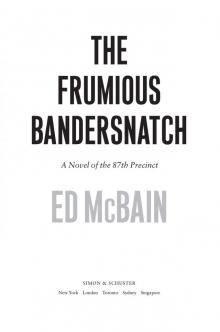 The Frumious Bandersnatch
The Frumious Bandersnatch The McBain Brief
The McBain Brief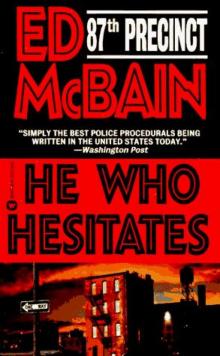 He Who Hesitates
He Who Hesitates Mischief
Mischief Fat Ollie's Book: A Novel of the 87th Precinct
Fat Ollie's Book: A Novel of the 87th Precinct A Matter of Conviction
A Matter of Conviction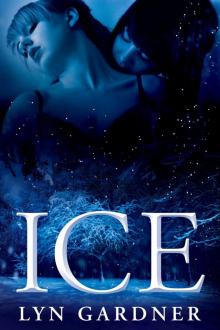 Ice
Ice Even the Wicked
Even the Wicked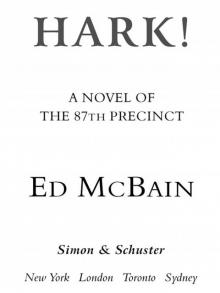 Hark!
Hark!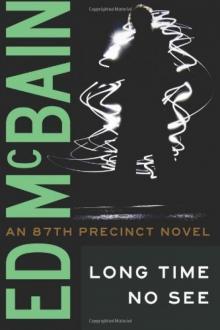 Long Time No See
Long Time No See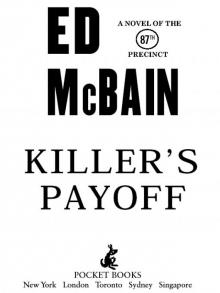 Killer's Payoff
Killer's Payoff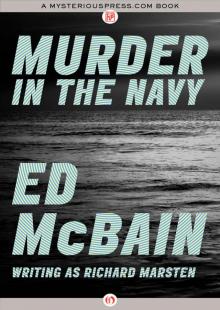 Murder in the Navy
Murder in the Navy A Horse’s Head
A Horse’s Head So Nude, So Dead
So Nude, So Dead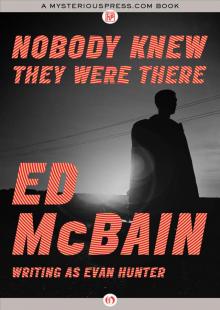 Nobody Knew They Were There
Nobody Knew They Were There Alice in Jeopardy
Alice in Jeopardy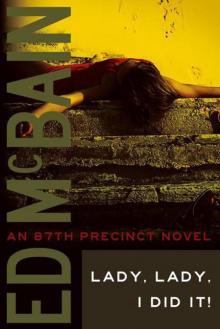 87P14-Lady, Lady, I Did It!
87P14-Lady, Lady, I Did It! Fuzz
Fuzz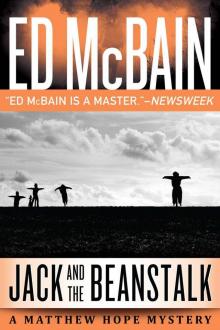 Jack and the Beanstalk (Matthew Hope)
Jack and the Beanstalk (Matthew Hope)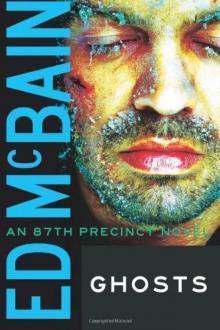 Ghosts
Ghosts Like Love
Like Love Cut Me In (Hard Case Crime)
Cut Me In (Hard Case Crime)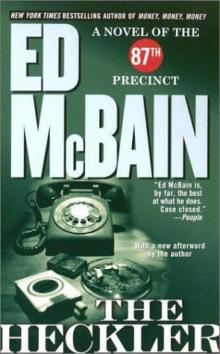 The Heckler
The Heckler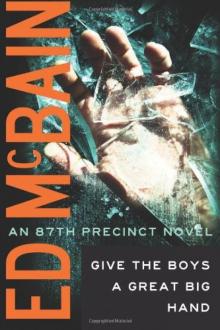 Give the Boys a Great Big Hand
Give the Boys a Great Big Hand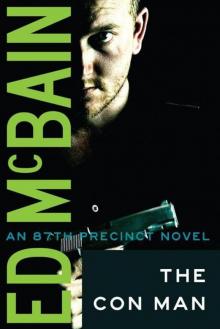 The Con Man
The Con Man Masters of Noir: Volume One
Masters of Noir: Volume One Money, Money, Money
Money, Money, Money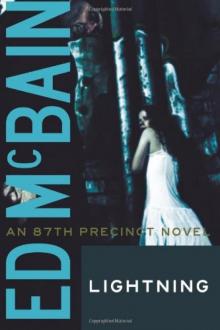 Lightning
Lightning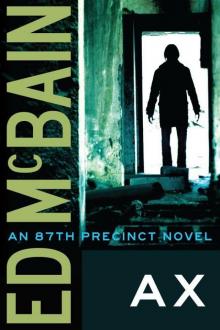 Ax
Ax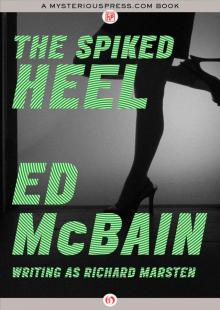 The Spiked Heel
The Spiked Heel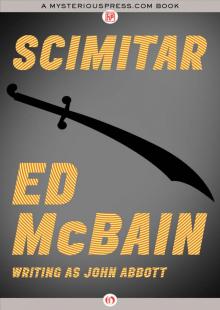 Scimitar
Scimitar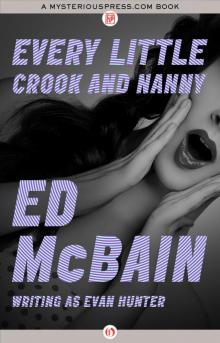 Every Little Crook and Nanny
Every Little Crook and Nanny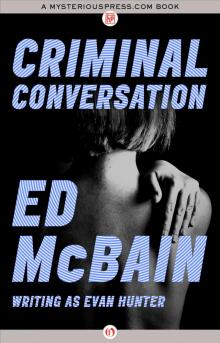 Criminal Conversation
Criminal Conversation Doors
Doors The Jungle Kids
The Jungle Kids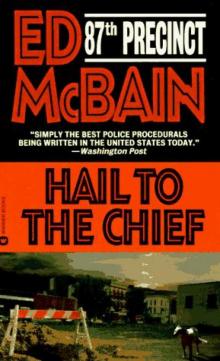 Hail to the Chief
Hail to the Chief Pusher
Pusher Killer's Choice
Killer's Choice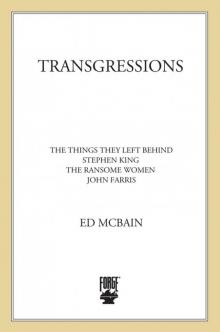 Transgressions Volume 2
Transgressions Volume 2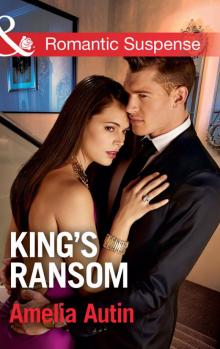 King's Ransom
King's Ransom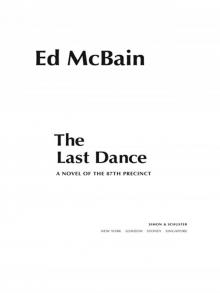 The Last Dance
The Last Dance Fiddlers
Fiddlers Don’t Crowd Me
Don’t Crowd Me Cinderella
Cinderella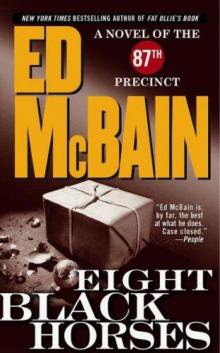 Eight Black Horses
Eight Black Horses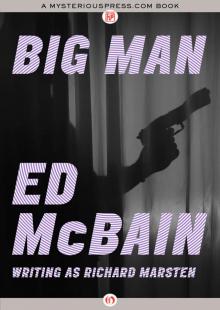 Big Man
Big Man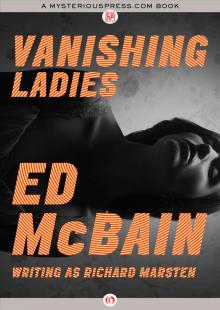 Vanishing Ladies
Vanishing Ladies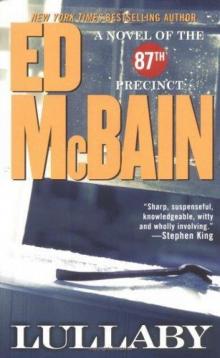 Lullaby
Lullaby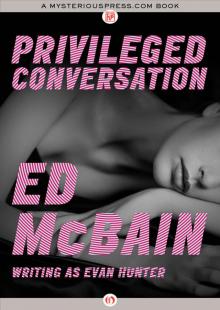 Privileged Conversation
Privileged Conversation Transgressions, Volume 4
Transgressions, Volume 4 The Mugger
The Mugger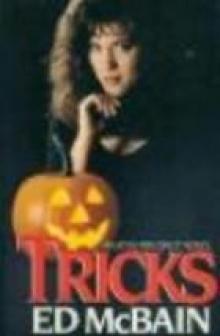 Tricks
Tricks Shotgun (87th Precinct)
Shotgun (87th Precinct) Hail, Hail, the Gang's All Here!
Hail, Hail, the Gang's All Here!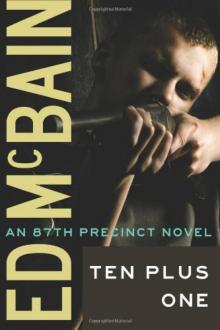 Ten Plus One
Ten Plus One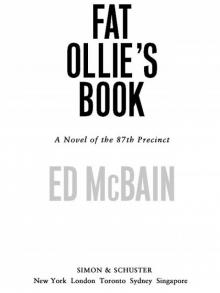 Fat Ollie's Book
Fat Ollie's Book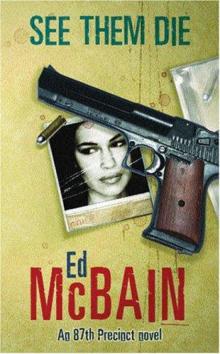 See Them Die
See Them Die Sadie When She Died
Sadie When She Died Til Death
Til Death Transgressions Vol. 3: Merely Hate/Walking the Line/Walking Around Money
Transgressions Vol. 3: Merely Hate/Walking the Line/Walking Around Money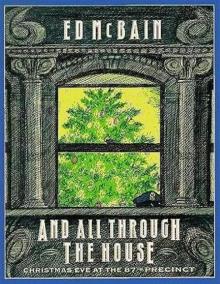 And All Through the House
And All Through the House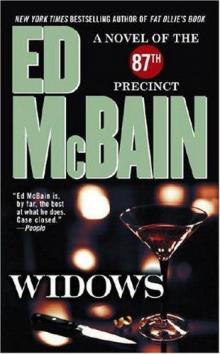 Widows
Widows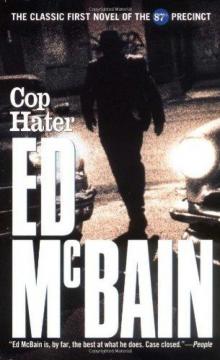 Cop Hater
Cop Hater Transgressions
Transgressions